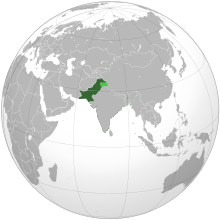Attack On Pakistan’s Kamra Airbase: What Next For Pakistan And TTP? – Analysis
By IPCS
By D Suba Chandran
The attack on a Pakistan airbase on 15 August 2012 was a grim reminder of an earlier attack on PNS Mehran in May 2011. While a section would consider this to be a tipping point, a cursory look at the reactions to such attacks in the past would indicate that they have not altered Pakistan’s response. It appears that both the attack and the response are along the same pattern. Or is the Kamra base attack actually a tipping point, especially if read along with General Kayani’s Independence Day speech? What next for the Tehrik-i-Taliban Pakistan (TTP) and the State?
Kamra Attack: Déjà vu

The most striking aspect of the TTP attack on Pakistan’s airbase in Kamra is its similarity with earlier attacks. One such instance is the attack on PNS Mehran, a naval station, in Karachi which destroyed significant naval assets including a P3-C Orion. In 2009, there was a similar attack on Pakistan’s military headquarters in Rawalpindi.
What was the primary objective of these attacks? Though some interpret the incident as revenge attacks, the fact that there were attacks earlier as well disprove the theories that the attack was motivated by the death of Osama bin Laden. The attack could be understood in terms of what the Haqqani network is pursuing within Pakistan – target high profile installations, thereby gain maximum publicity and enhanced popular support. The attack could possibly also be an attempt by the TTP and its supporters in Afghanistan to make Pakistan unstable and vulnerable as a blowback to its support for the US in the region.
Although a section wanted to go after the TTP immediately after the attacks, the majority within Pakistan debated whether this was their war and concluded that they were at the receiving end for supporting an American war in Afghanistan. The debate in the electronic media, except for a small exception, was centered around “external solutions” being imposed on Pakistan.
What Next for the TTP and the State?
A section within Pakistan argues that these places were targeted because of the significance of the military assets therein. The TTP claimed that the Kamra airbase was targeted as the planes were being used to kill the TTP cadres. However, neither the fighter aircrafts stationed in the Kamra airbase, including the SAAB 2000, nor the aircrafts that were demolished in Mehran naval base, including the P 3-C Orion, have been used by the Pakistani military to target the TTP.
The primary target, thus, seems not to be the assets within these bases, but their significance and military importance, thereby garnering the publicity and furor by attacking such high profile targets in Pakistan. If the TTP believes that it can demolish these bases with few fighters (between 8 and 15), it should have super-human fighting skills and enormous fire power. The fact that the suicide bombers were used to create a diversion, allowing other militants to sneak into the base, shows their strategy is aimed at creating limited damage, but gaining huge publicity.
Second, these bases are also relatively soft targets. Instead of engaging the military forces in pitched battles, organizing such attacks provide the space, time and, more importantly, the element of surprise. Despite the security precautions, as an Irish Republican Army bomber in UK boasted, the militants have to be lucky only once, whereas the security forces have to be alert all the time.
Third, as mentioned above, the anti-US debate that follows such attacks helps the TTP, Taliban and the Haqqani network. It also creates an environment of political instability which is the most important component for such groups to thrive.
As a result, the TTP is expected to indulge in such high profile targets. It involves minimum manpower – ten to fifteen militants could create mayhem, while similar battalion strength would not be able to succeed in a pitched battle in the FATA. It also provides maximum result – in terms of publicity, evoking anti-US debates and putting pressure on the government to look for ‘indigenous solutions’, which avoid fighting the local militants.
The State is reluctant to go after the militants as a section within the military and ISI consider these groups as assets that can be used in the future against Afghanistan and India. The debate regarding ‘whose war it is’ continues not only at the civil society level, but also within the military establishment and the ISI. General Kayani’s Independence Day address hinting it is Pakistan’s war, although shows a change, one is not sure, whether this change is reflected within the Establishment as a whole. The recent court martial of three officers in May 2012 for their complicity in the PNS Mehran attack would hint at the level of inside support for such attacks by the TTP. Even in the case of the Kamra attack, ‘inside support’ theory is being looked into.
So what would be the nature of the proposed military operations in North Waziristan? Will it aim to uproot the TTP and completely neutralize them, or will it be calibrated depending on the existing internal and external pressure against it?
Pakistan’s military will muddle through the proposed military operations, which is likely to lead to a similar recurring situation.
D Suba Chandran
Director, Institute of Peace and Conflict Studies
email: [email protected]
